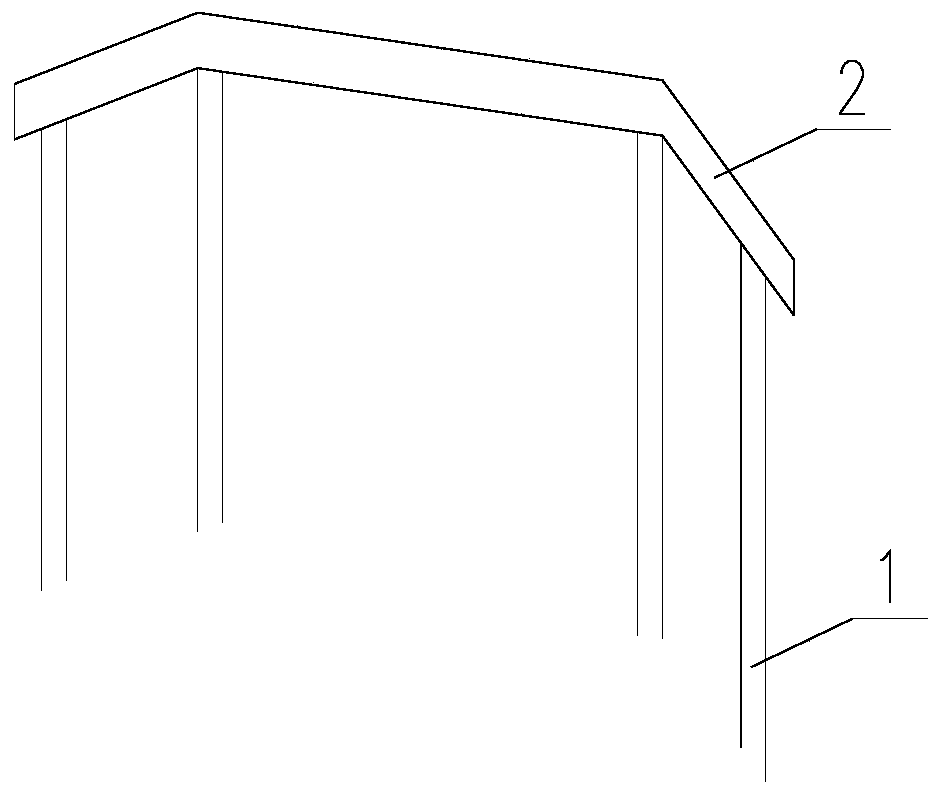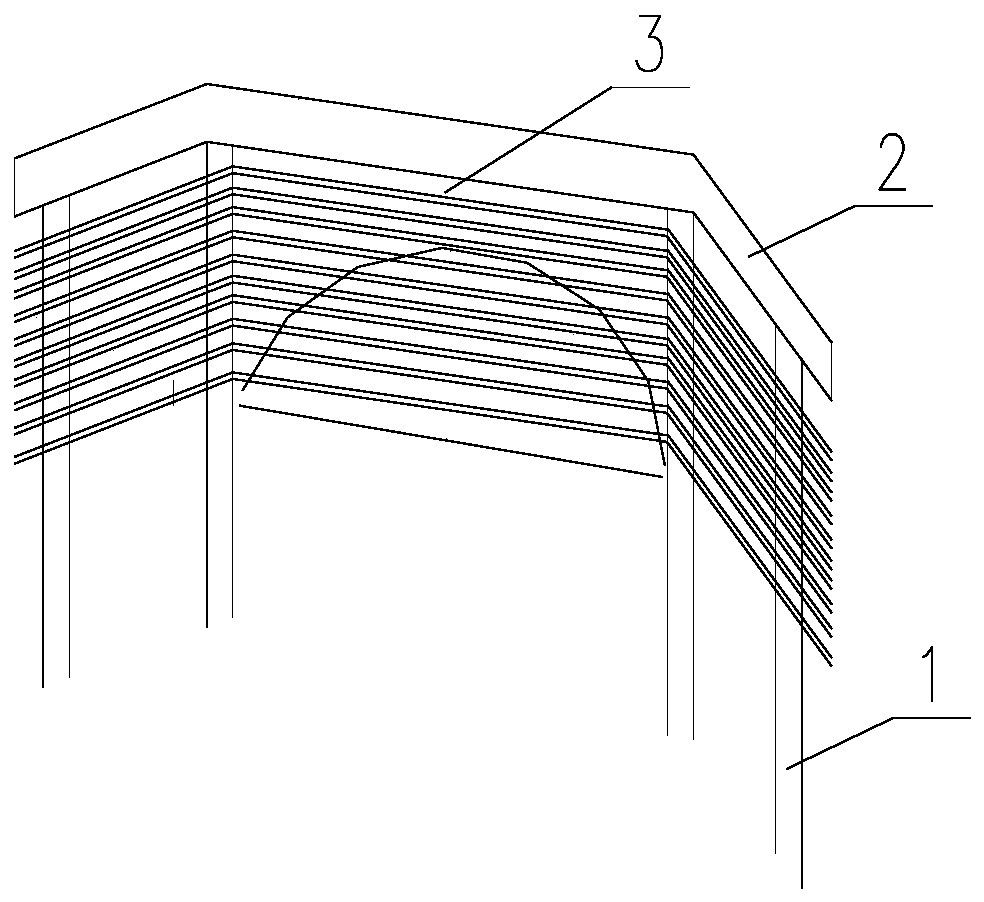Construction method and structure of tunnel entering
A construction method and hole-entry technology, applied in tunnels, tunnel linings, infrastructure engineering, etc., can solve the problems of large ecological environment damage, large site occupation, and large amount of temporary slope protection works, so as to reduce backfilling and occupation It is beneficial to the effect of slope stability
- Summary
- Abstract
- Description
- Claims
- Application Information
AI Technical Summary
Problems solved by technology
Method used
Image
Examples
Embodiment Construction
[0021] The specific construction method described in the present invention is further described as follows in conjunction with the accompanying drawings and embodiments.
[0022] The invention proposes the tunnel entry structure and construction method: the tunnel entry support structure is composed of cast-in-situ piles, crown beams, grid steel frame and sprayed concrete; advanced pipe shed or small conduit grouting or anchors are applied along the excavation line The rod is used as the advance support of the underground excavation, providing effective auxiliary measures for the underground excavation; the construction is carried out in steps.
[0023] Such as Figure 1-Figure 6 As shown, the present invention proposes the construction steps of the tunnel entry structure: first, manual digging or drilling of concrete piles 1; construction of crown beams 2; layered excavation support grid steel frame mesh shotcrete 3 from top to bottom; Apply advanced pipe shed or small pipe ...
PUM
 Login to View More
Login to View More Abstract
Description
Claims
Application Information
 Login to View More
Login to View More - Generate Ideas
- Intellectual Property
- Life Sciences
- Materials
- Tech Scout
- Unparalleled Data Quality
- Higher Quality Content
- 60% Fewer Hallucinations
Browse by: Latest US Patents, China's latest patents, Technical Efficacy Thesaurus, Application Domain, Technology Topic, Popular Technical Reports.
© 2025 PatSnap. All rights reserved.Legal|Privacy policy|Modern Slavery Act Transparency Statement|Sitemap|About US| Contact US: help@patsnap.com



